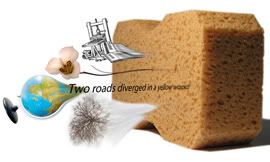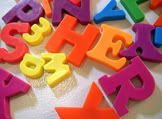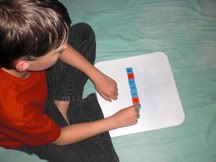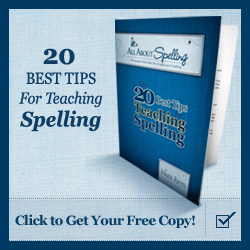 I am somehow able to absorb information like a sponge and remember much of it through reading, watching, listening, or whatever method in which it is delivered. I had an easy time of school, but was never motivated to do any more than what I felt was necessary. I got good grades because I realized that was necessary, but I never took part in activities or attempted to learn new skills or talents or anything outside of what was required.
I am somehow able to absorb information like a sponge and remember much of it through reading, watching, listening, or whatever method in which it is delivered. I had an easy time of school, but was never motivated to do any more than what I felt was necessary. I got good grades because I realized that was necessary, but I never took part in activities or attempted to learn new skills or talents or anything outside of what was required.Because my son is dyslexic, learning is a much more difficult task for him. I love learning now that I'm older and realize how much I missed when I was younger. Nick loves learning as long as it is delivered in such a way that he can absorb it best. He learns best through hands-on experimentation or through video presentations. It is certainly possible to deliver much of his education through these methods, but sometimes I wonder how much he is missing because he has a hard time reading.
As someone who doesn't have difficulty reading, I often feel sorry for him because I see how much it pains him, physically and emotionally. As his teacher it sometimes frustrates me because both our lives would be easier if reading was easy for him. Then I think about how much I missed because reading was easy for me. I took it for granted. You never really appreciate something that's always there. So maybe his dyslexia is a gift
In the beginning
 Nick was 3 when I first started teaching letters and sounds to him. He picked it up easily and was able to sound out three-letter words very quickly. We used those refrigerator magnets and I would slide letters into place. I remember very distinctly him reading "fun", then "sun", then "run". I was just so excited.
Nick was 3 when I first started teaching letters and sounds to him. He picked it up easily and was able to sound out three-letter words very quickly. We used those refrigerator magnets and I would slide letters into place. I remember very distinctly him reading "fun", then "sun", then "run". I was just so excited.When kindergarten started, I had prepared him the best way any mom could. I remembered the things I needed to know in kindergarten so I taught him how to count to 100, his ABCs, his colors, shapes and so many other things. He had learned how to work with safety scissors, glue and other craft supplies in preschool as well as at home and already knew how to write his name. He was even working on the computer already.
After several months, all parents were called in to conference with the teacher about testing scores. They had spent three weeks testing all the children to see where they were and explaining all the results to the parents. Nick scored well above the national average as did several other children in the class. One kid got a 4 (the national average was 23).
I was excited that Nick had scored so high and his teacher said he was ready to read. I knew that because we were already reading. So I asked her what her plan was and she said she wasn't going to do anything. Because that one kid got a 4, all the kids in the class had to be brought down to his level so he could catch up. I was livid. I didn't want her holding my son back because some other kid's parents didn't teach him well enough. She said she didn't want the kids forming cliques. At five years old? I knew I couldn't leave my son in this system that purposely dumbed down all the smart kids.
Homeschooling begins
I figured I had already taught my son everything they were planning on teaching him in kindergarten before he even started, so I could teach him everything else. I knew I could do a better job than his teacher. So it began.
At first I was using workbooks for Nick to go through. I didn't really know what else to do and they seemed to be helpful before. Besides, that's what his teacher was doing. That should have been a red flag to me, but I wasn't paying attention.
The workbooks for reading helped Nick identify the letters and their sounds, but it was all the same stuff I had already taught him and I decided to move past that and just start reading simple books. He was doing fine until we got to words that had those weird vowel combinations that seem to never sound the same way twice.
If I knew then what I know now, I would have gone through the workbooks in order like I was supposed to. First of all, repetition is important to learning something thoroughly. Secondly, all those weird vowel combinations were covered later on in the workbooks. However, workbooks alone aren't enough. I could have made life a lot easier for him by using multi-sensory methods to work with the letters, sounds and words. Things like making the letters out of clay or Legos would have solidified their images in his mind better.
My methods simply weren't working. He could identify the letters individually most of the time and write what he saw but when we were reading, it seemed he no longer recognized them. If I could have seen what he saw in his head I would have understood exactly what was going on, but at the time I just assumed he wasn't really paying attention to my instruction or just had a super short memory.
Then I suspected dyslexia
I don't remember when it first hit me, but at some point I finally realized it could be dyslexia. My mom is dyslexic and I knew it was genetic. That's pretty much all I knew. I tried getting help from the public school system, but they didn't know much about the condition either and pretty much blamed me for his inability to read. They seemed much more interested in harming me rather than helping him.
After trying many methods that only helped him read small words, I started doing some serious research into what dyslexia is and what can be done about it.
After much research, I began using the methods described in the book The Gift of Dyslexia.
 They help by allowing Nick to use his imagination in order to create a personal connection to the words that cause him trouble. He worked with clay to form the letters in 3-D. He also used the clay to form representations of words that cause trouble, so that when he reads he "sees" what's going on in his mind.
They help by allowing Nick to use his imagination in order to create a personal connection to the words that cause him trouble. He worked with clay to form the letters in 3-D. He also used the clay to form representations of words that cause trouble, so that when he reads he "sees" what's going on in his mind. We all tend to form a mental picture while we are reading, but there are certain words that don't have a picture. Those of us who are not dyslexic just read the word but the image of the story remains in our heads. For some people who are dyslexic, it is hard to read the word without having a visual connection to it. The book teaches dyslexics to create images out of clay to represent troublesome words so they can use those images in their mental picture when they are reading. This allows them to continue the story without getting stuck on the troublesome words. There were a few other methods in the book that I found helpful (two are described in the video below).
But the methods in The Gift of Dyslexia
Many years later
So what do I use now to help him read? Well, a combination of things. Most important is using multi-sensory methods to help him solidify the lessons in his mind. Combining sight, sound, touch, and taste and smell if it's feasible, helps him actually take part in his own instruction and he begins to own the lesson in a sense. By making it his own, he feels more of a connection to it and will remember it more.
Repetition is also important. Going over previously learned words, spellings, rules and tips at the beginning of every session is really helping him form solid spelling, reading and comprehension skills.
 I have been using the All About Spelling system for a while now with amazing results in his spelling. The bonus is that his reading has improved tremendously as well. The trick they use which I've been using for other lessons as well, is to review previous lessons at the beginning of each session (the repetition I mentioned) and they use colored flash cards (studies show color enhances retention by about 30 percent). They use multiple senses (hearing, seeing, touching, etc.) and positive reinforcement (a completion chart that shows his progress). Oh, and magnets. I knew the magnets worked when Nick was 3; I should have just stuck with them.
I have been using the All About Spelling system for a while now with amazing results in his spelling. The bonus is that his reading has improved tremendously as well. The trick they use which I've been using for other lessons as well, is to review previous lessons at the beginning of each session (the repetition I mentioned) and they use colored flash cards (studies show color enhances retention by about 30 percent). They use multiple senses (hearing, seeing, touching, etc.) and positive reinforcement (a completion chart that shows his progress). Oh, and magnets. I knew the magnets worked when Nick was 3; I should have just stuck with them.The point of it all is that getting him engaged in the activity in more ways than one helps him retain the information better. I use multi-sensory methods to teach him all of his subjects and it makes life easier for us both. He actually enjoys learning, is enjoying reading more and we are making major progress in his education.
I know I didn't exactly start Nick off right when I decided to homeschool. I made the assumption that because we already covered something, he would know it forever. I can't stress enough how important it is to reinforce lessons by reviewing them until they are second nature to your child. Reading is like learning a foreign language. You don't just hear a new word and have it permanently imprinted in your brain. You must go over it again and again until it feels natural to you and you can automatically recall it. Reviewing it is how you reinforce it in your brain.
I started off right by using the letter magnets, and I should have just continued using similar methods (fun and multi-sensory ones) to teach him. When I taught him his colors, numbers and shapes, I used visuals and verbal repetition. I also used computer programs that made the learning fun. These methods are best in teaching all children, because when they become involved in the lesson like this, they connect to it better and retain the information better.


Thank you for writing this...I've just picked up so many ideas from your blog on how to teach my daughter. We live in Singapore.
ReplyDeleteI'm happy to offer all the information I have. Dyslexia is still so misunderstood and finding help is difficult. I wish you lots of luck with your daughter.
ReplyDelete